It is likely that the commercial success of Connected and Automated Vehicles will be predicated on their safety and environmental performance. Without demonstrable reductions in road casualties and all harmful emissions, the economic benefits will not be realised. This is because the supply and demand business model is centred on our willingness to adopt and pay for new mobility solutions. TRL believe that this equation only balances in favour of Automated Vehicles when a robust AV approvals process is in place to establish public confidence and build a competitive and sustainable industry.
The UK government’s proposed safety ambition for self-driving vehicles is that they ‘would be expected to achieve an equivalent level of safety to that of a competent and careful human driver’. TRL’s safety ambition is that automated vehicles must significantly exceed the safety performance of human driven vehicles. The words ‘careful’ and ‘competent’ are adjectives and simply describe human attributes. In our view, successful regulation must be technology agnostic, avoid ambiguity, and crucially, be relevant.
Below are five blogs written by TRL specialists in vehicle regulation, automation and safety assurance. Together they dispel the notion that developing a regulatory environment for CAM is an existential problem. They present concepts for a framework that is sustainable over the years ahead as the automated vehicle parc increases. Click on the images to open each PDF in a new window.
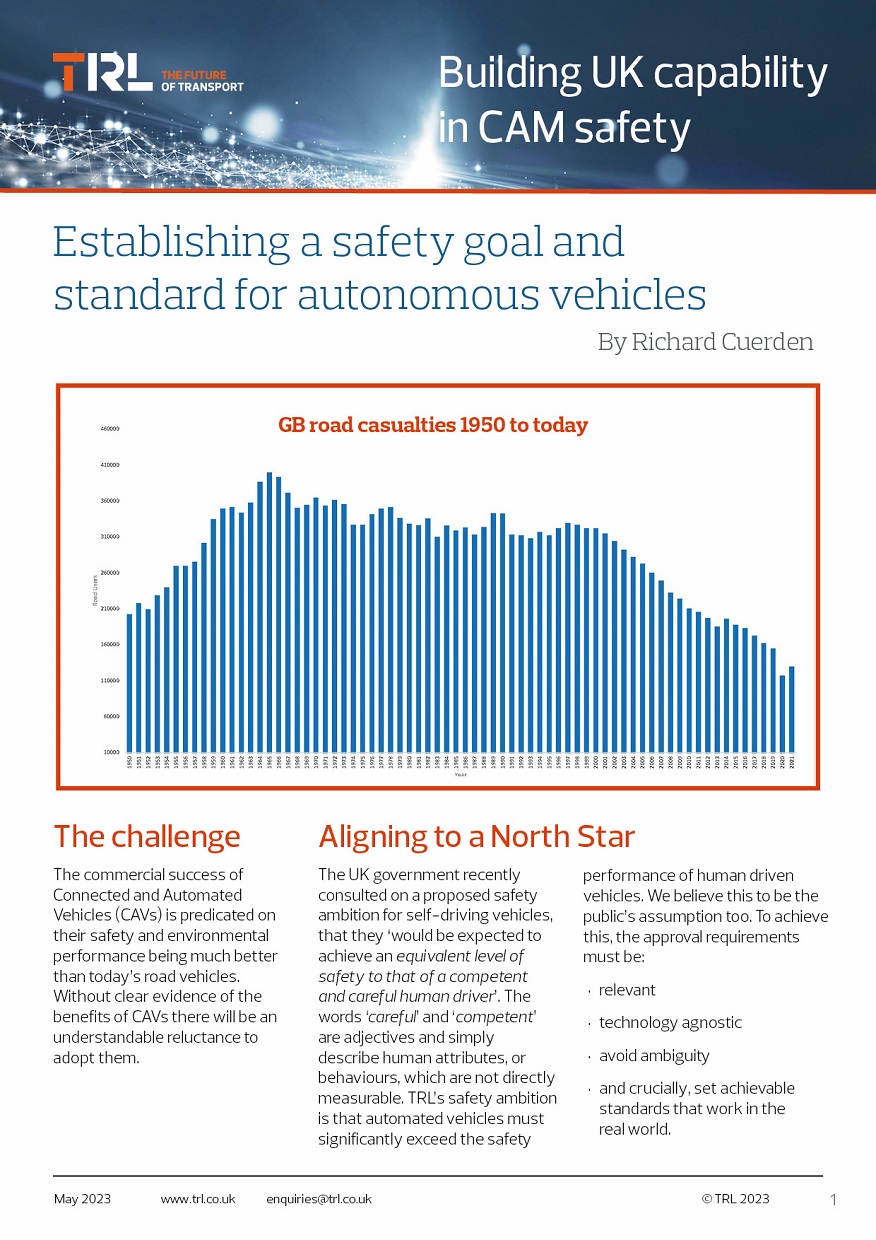 1. Richard Cuerden proposes an approach for the UK based on generating the evidence that self-driving vehicles are safer than a human-driven fleet
1. Richard Cuerden proposes an approach for the UK based on generating the evidence that self-driving vehicles are safer than a human-driven fleet
TRL’s vision is for a safety framework for automated vehicles based on measurable design and performance parameters that results in self-driving vehicles being designed for success and brought to market with intrinsic public confidence in their safety. Open the PDF >>
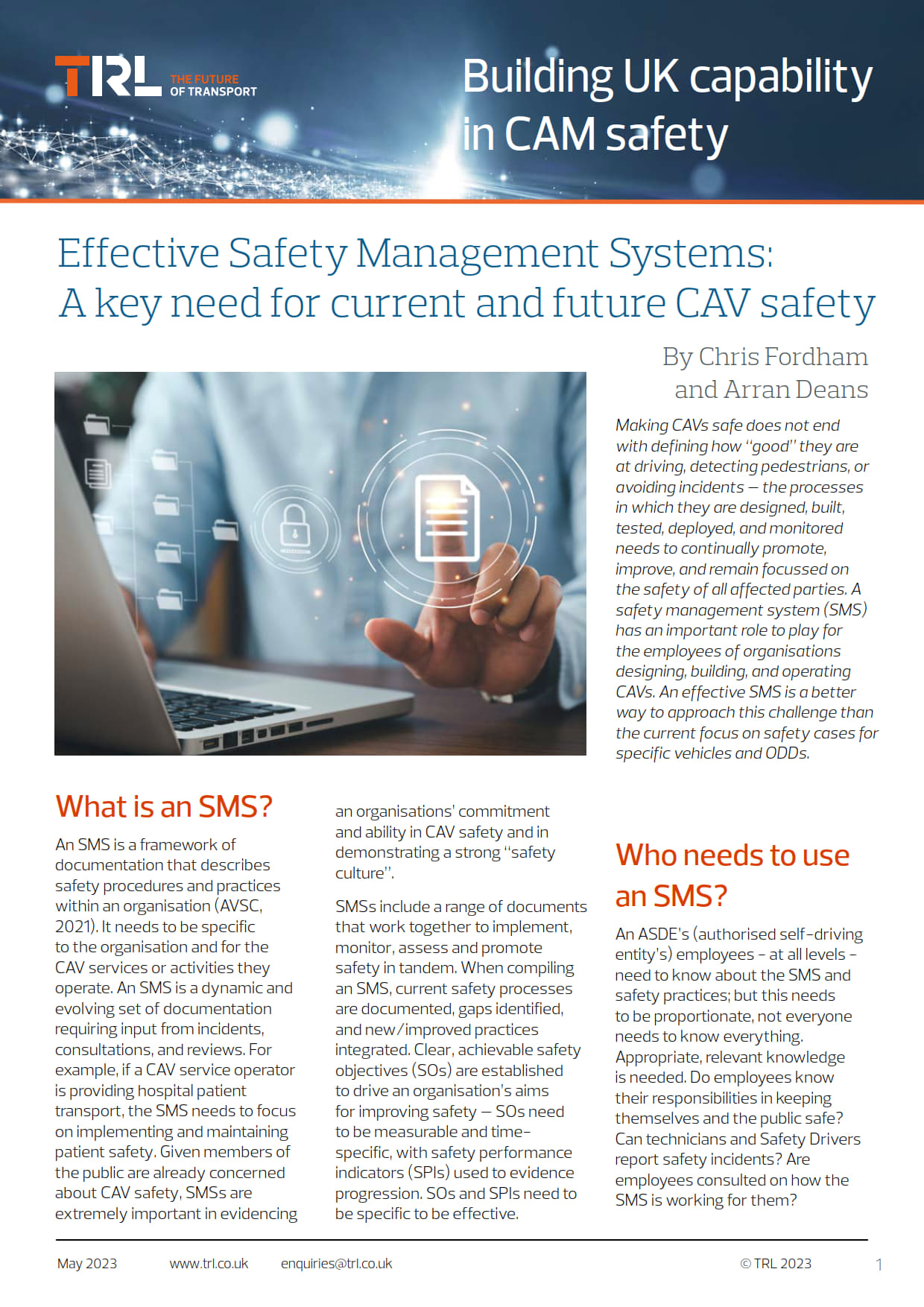 2. Chris Fordham writes about the value of Safety Management Systems in AV design
2. Chris Fordham writes about the value of Safety Management Systems in AV design
To-date, safety assurance for AV tests and trials in the UK has been centred on the development, implementation and maintenance of a test-specific or trial-specific safety case. However, as organisations look to deploy AV services across a variety of operational domains, a deployment-specific safety case is not enough on its own; it will need to be supported by a robust, effective safety management system (SMS). Chris explores why an effective SMS is vital for AV deployments, not just for the organisation responsible for the AV deployment, but for consumers and other road users alike, and how it can leverage public trust and acceptance of AVs. Open the PDF >>
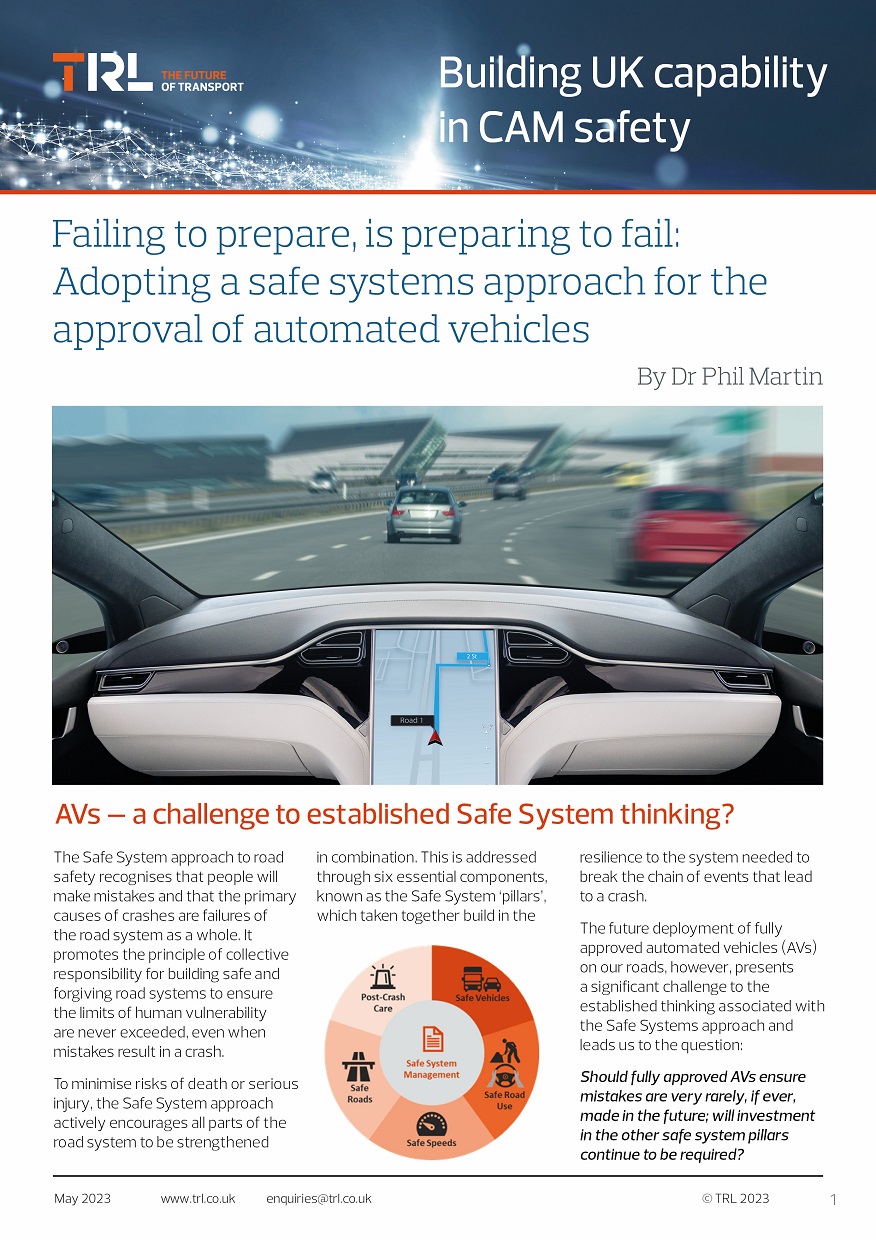 3. Dr Phil Martin looks at the impact of adopting a systems approach to meet the rising demand for CAM
3. Dr Phil Martin looks at the impact of adopting a systems approach to meet the rising demand for CAM
CAVs present an opportunity for a step change in vehicle safety, but how may their introduction impact the safety requirements for the rest of the transport system? Framing this in the context of the safe systems approach, Dr Phil Martin explores the potential impacts of introducing CAVs to the vehicle fleet for each safe system pillar. He reflects on the future challenges and opportunities for each pillar under various CAV risk acceptance and fleet uptake scenarios. He assesses various approaches for addressing the risks and maximising the benefits posed by CAVs, whilst also discussing their potential impact on the balance of expenditure across the system. Open the PDF >>
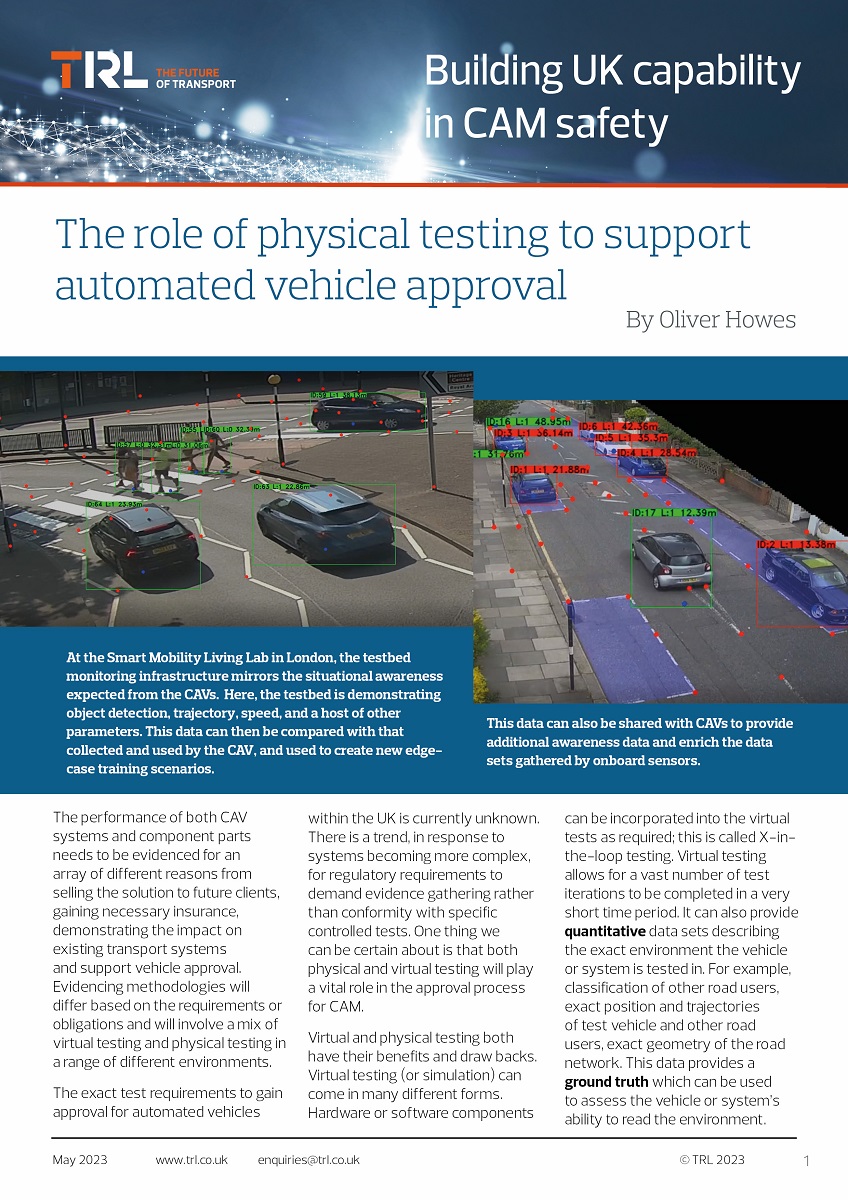 4. Oliver Howes explains the role of physical testing to support automated vehicle approval
4. Oliver Howes explains the role of physical testing to support automated vehicle approval
The performance of both CAV systems and component parts need to be evidenced for an array of different reasons from selling the solution to future clients, gaining necessary insurance, demonstrating the impact on existing transport systems and also to support vehicle approval. Evidencing methodologies will differ based on the requirements or obligations and will involve a mix of virtual testing and physical testing in a range of different environments. Oliver shows how physical testing can support evidence generation with a particular focus on the vehicle approval process. He demonstrates how physical testing can directly support evidence generation and support virtual testing methods. Open the PDF >>
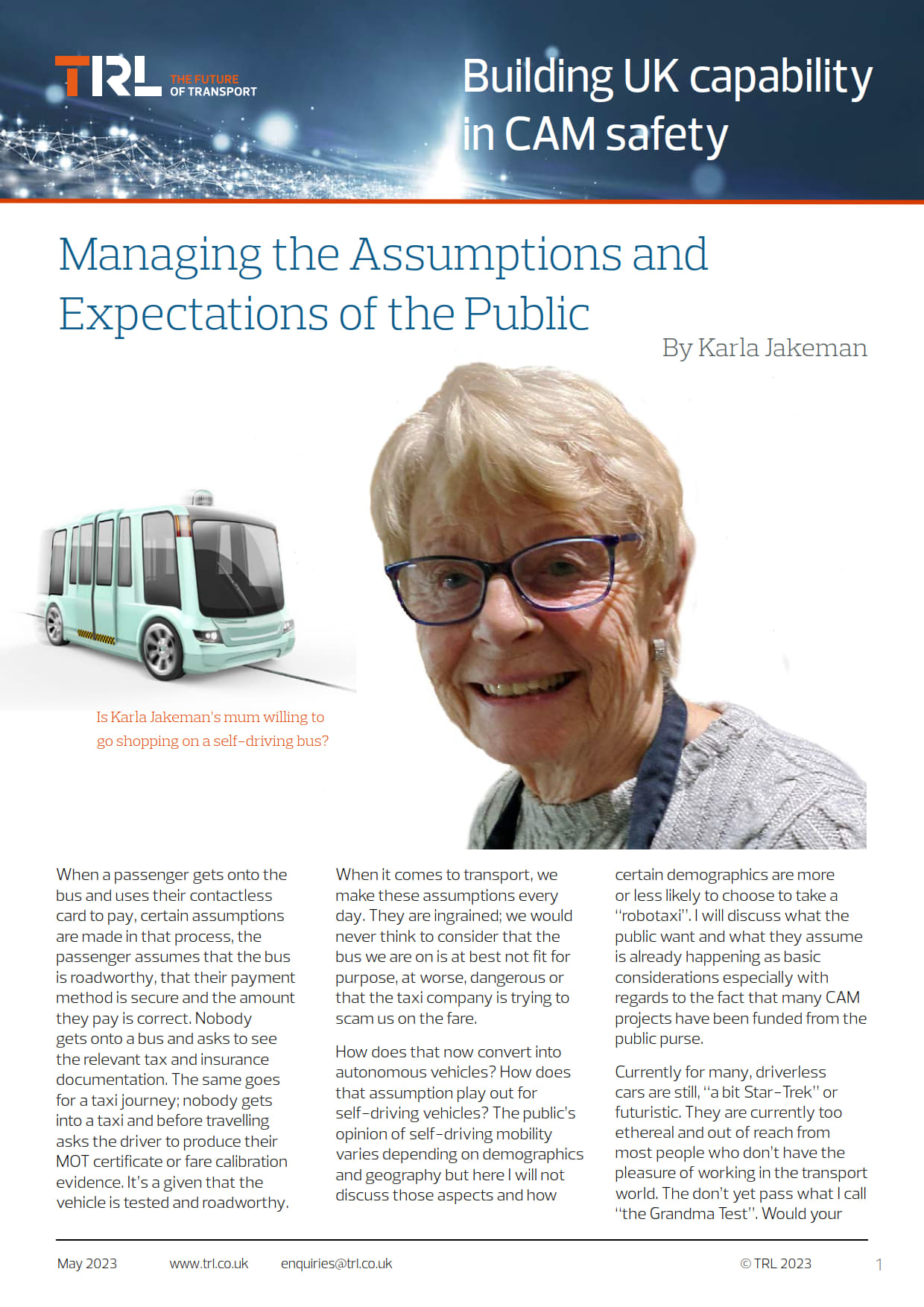 5. Karla Jakeman addresses the need to be constantly aware of public perception
5. Karla Jakeman addresses the need to be constantly aware of public perception
Public opinion on CAV’s varies depending on demographics and geography but regardless of this fact – safety is still the number one concern. Karla Jakeman, Head of Automation of Transport identifies not only what the public want and need, but what they assume is already happening as a basic consideration, bearing in mind the use of public funds. The public have the right and agency to ask questions, the right to know that CAV technology is being tested - but in a digestible manner. They don’t want to read PAS guidelines or ISO standards, they ‘merely’ want the confidence to know that a co-ordinated approach has been taken in the development of CAV’s for their roads and their usage, for their safety. Open the PDF >>

